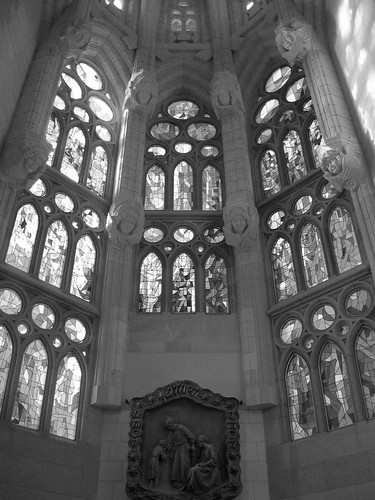Columnist Matt Flocco says there’s nothing wrong with embracing carnal pleasures.

ROME – Spring break in Europe was full of indulgence, but is indulgence or immersion in something a bad thing? Some might say it is. That’s why we have Fat Tuesday or Mardi Gras – one last hurrah before Ash Wednesday – the holiday that starts the season of Lent. Lent leads up to Easter. Then nothing happens for a while and we’re all doing Christmas shopping the day after Halloween.
Like I said though, indulgence is the perfect word for spring break. And yes, I can make it a religious term.
Philosophers, such as Friedrich Nietzsche focus their writings on two ideologies based on Greek myth: Apollonian and Dionysian thought. Apollo is the god of the sun, clarity, reason and music – all that nice stuff that is packaged so neatly together. Dionysus, on the other hand, is the god of revelry, wine, intoxication and all the good party stuff that accompanies Carnival celebrations across the world, leading up to Ash Wednesday.
Dionysus might as well have been our group tour guide on spring break. We started our break a week before Main Campus did, and departed Rome for various cities in the midst of all their Carnival celebrations. The week was spent in revelry and intoxication.
From the disco-tech called Opium on the beach in Barcelona, Spain, to a piazza party in Venice, Italy, I was completely immersed in the festivities around me.
Yes, there was a pub crawl in Madrid, Italy, during which I downed eight glasses of Sangria, followed by two Licorice shots, a Butterscotch shot and a Heineken (I wanted to get my 10 Euros worth).
Alas, I was intoxicated not with alcohol (OK, maybe a teeny smidgen), but with the experience of being abroad and talking to all sorts of people from around the world.
During that crawl, I talked to two kids from China who were studying in Germany, a woman from New Zealand who was teaching English in France and two Italians who were traveling in Spain. In Barcelona I danced with a Brazilian, and in Venice, I talked to two Brits about Barcelona.
What could top off the atmosphere of revelry? Loud American music. And which American artist happened to be dancing on the Jumbotron in the middle of Piazza San Marco in Venice – Michael Jackson.
Venice was the epitome of this Dionysian revelry, and the sea of masks and extravagant costumes, between a magnified Jackson and the enormous church of San Marco at the other end of the piazza, summed it all up for me.
Revelry, immersion and indulgence are not bad things if used in the right way. I had learned earlier in the day that the masks of Carnival were, and still are, significant because they hide peoples’ faces, allowing the upper and lower classes to celebrate together.
As I looked around at everyone and at the screen, I couldn’t help but hear Jackson’s “Black and White” playing in my head, reminding me that all are created equal in the eyes of God. (Let me set the record straight – the song has a good message, but I don’t think Jackson is the Messiah).
In my opinion, it seems like the whole afterlife thing is overrated, and that it simply got a bit misinterpreted over the last thousand years. Yeah, I think it exists, but I don’t think we’re all going to hell because we dance in the streets in revelry. Besides, there’s no way we would all fit down there. Earth’s core has got to be pretty compact.
I think that we were created to live. Why were we given life if we’re supposed to worry about what happens next the entire time?
These questions of our humanity and spirituality are ones that the famous architect Antoni Gaudí sought to pose in his architecture in Barcelona. The most notable of his works is the “Church of the Holy Family,” a work that will not be completed until 2029.
On one side of the church, the nativity facade shows a gigantic story of Christ’s birth and early life. On the other side is the Passion facade, which depicts the events leading up to Christ’s death. The third facade is nowhere near complete, but will be called the Glory facade.
This Glory facade is the metaphorical capstone of the church. According to the church’s audio guide, Gaudí intended this as a facade for the people. Between the birth and death of Christ, there are humanity’s unanswered questions, as they are in all religions – these questions are confusing and complicated.
It seems throughout my hodgepodge blur of Venetian masks, Spanish food, pub crawls, foreign accents, museum excursions, church visits and walking tours that I found were what I was looking for on this study abroad experience.
All I needed to do to get a simple moment of clarity was to stop questioning it all and start being in it.
Matt Flocco can be reached at matthew.flocco@temple.edu.



Be the first to comment